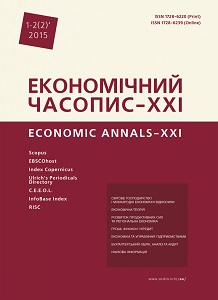School Networks Optimization under the Social Value Based Approach: the Regional Context
School Networks Optimization under the Social Value Based Approach: the Regional Context
Author(s): Maryna Pashkevych, Maryna KharchenkoSubject(s): Economy
Published by: Institute of Society Transformation
Keywords: School Networks; Social Value; Regions and Districts; Regulation; Productive Forces
Summary/Abstract: Introduction. Despite considerable attention to the spatial distribution of productive forces, we should notice that spatial distribution of schools in Ukraine remains unsolved, though it has a strategic importance due to its impact on human resources development and specialization. One of the tasks for effective social policy is spatial distribution of schools optimizing across a certain regional district. It means that some schools are to be closed while others left working. Therefore, finding out what schools are to be closed and whether it is the best optimization decision is a topical research contributing to the solution of the primary problem. Purpose. The study is aimed at putting rationale behind the concept of a new method developed by the authors for assessment of social value assigned to schools within a certain district by different economic agents. The underlying problem is ongoing approach to the school networks optimization across regions performed by the Ukrainian Government. It influences human resources development as a part of productive forces. Methodology. Analysis, synthesis, systematization, classification, logical chains and critical thinking were employed for introducing the concepts of «macro value», «micro value» and «social value» of schools. The social value of schools was formalized with an additive model. To find values of variables included into the model, a method of expert assessment was used. A method of ranks was taken for comparing expert assessments about social value of schools. To provide recommendations concerning particular schools to be closed, we employed a method of calculating the mean. Results. Spatial distribution of schools across a certain district has a close relationship with the productive forces development and regulation of regional economic growth. Assessment of social value of schools returns opposite outcomes in terms of schools’ ranks in comparison with the cost method currently employed by the Ukrainian Government. It has been proven by research of 19 secondary schools in Stakhanov city of Lugansk region (Ukraine). At the same time, any of these two methods does not give a balanced model for the school network development. Conclusion. The concept of schools’ social value represents their ability to meet the needs of consumers and is composed of micro value assigned by consumers of education services and macro value assigned by consumers of human resources. A conceptual Social Value Based Approach (SoVa) to the optimization of the school networks across districts demonstrates choice about closure of schools polar to the governmental cost approach since it operates with value for different groups of economic agents rather than costs.
Journal: Економічний часопис - ХХІ
- Issue Year: 148/2015
- Issue No: 01+02 (2)
- Page Range: 16-19
- Page Count: 4
- Language: English

